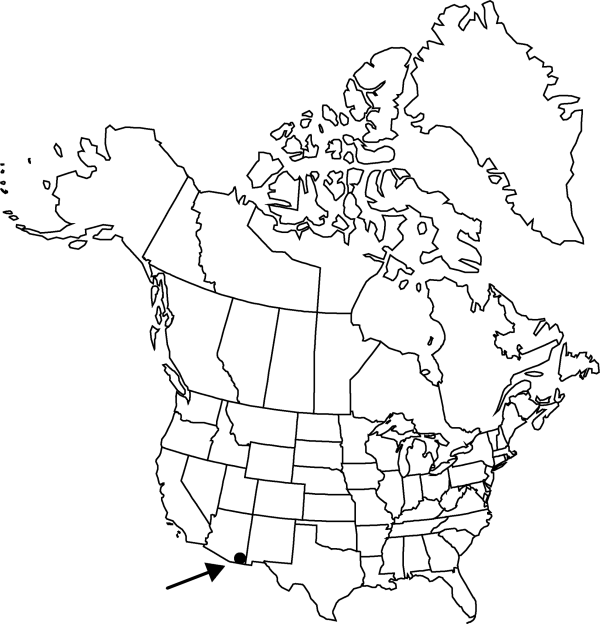Difference between revisions of "Coryphantha robbinsorum"
Cac t. Succ. J. (Los Angeles) 50: 294. 1978.
FNA>Volume Importer |
FNA>Volume Importer |
||
| Line 11: | Line 11: | ||
|name=Cochiseia robbinsorum | |name=Cochiseia robbinsorum | ||
|authority=W. Earle | |authority=W. Earle | ||
| + | |rank=species | ||
|publication_title=Saguaroland Bull. | |publication_title=Saguaroland Bull. | ||
|publication_place=30: 64. 1976 | |publication_place=30: 64. 1976 | ||
| Line 17: | Line 18: | ||
|name=Escobaria robbinsorum | |name=Escobaria robbinsorum | ||
|authority=(W. Earle) D. R. Hunt | |authority=(W. Earle) D. R. Hunt | ||
| + | |rank=species | ||
}} | }} | ||
|hierarchy=Cactaceae;Cactaceae subfam. Cactoideae;Coryphantha;Coryphantha robbinsorum | |hierarchy=Cactaceae;Cactaceae subfam. Cactoideae;Coryphantha;Coryphantha robbinsorum | ||
| Line 43: | Line 45: | ||
-->{{#Taxon: | -->{{#Taxon: | ||
name=Coryphantha robbinsorum | name=Coryphantha robbinsorum | ||
| − | |||
|authority=(W. Earle) A. D. Zimmerman | |authority=(W. Earle) A. D. Zimmerman | ||
|rank=species | |rank=species | ||
| Line 58: | Line 59: | ||
|publication year=1978 | |publication year=1978 | ||
|special status= | |special status= | ||
| − | |source xml=https://jpend@bitbucket.org/aafc-mbb/fna-data-curation.git/src/ | + | |source xml=https://jpend@bitbucket.org/aafc-mbb/fna-data-curation.git/src/f50eec43f223ca0e34566be0b046453a0960e173/coarse_grained_fna_xml/V4/V4_424.xml |
|subfamily=Cactaceae subfam. Cactoideae | |subfamily=Cactaceae subfam. Cactoideae | ||
|genus=Coryphantha | |genus=Coryphantha | ||
Revision as of 21:40, 16 December 2019
Plants usually unbranched, spine-bearing areoles with long white wool obscuring basal portion of spine. Roots diffuse or short taproots. Stems deep-seated (buried except for its apical 0.5–3 cm), 2–10 × 2–6 cm; tubercles 5–8 × 4–6 mm, moderately soft; areolar glands absent. Spines 11–20 per areole, white, largest spines dark tipped when fresh, straight; radial spines 10–20 per areole, 8–18 × 0.2–0.5 mm; central spines 0(–1) per areole, similar to largest radial spines, but porrect, ca. 8–18 mm. Flowers nearly apical, 12–29 × 10–18.5 mm; outer tepals fringed; inner tepals 14 per flower, dull yellow, frequently tinted greenish or bronze, often with midstripes of brownish or dull pink; outer filaments greenish; anthers bright yellow; stigma lobes green or yellow-green. Fruits bright orange-red or scarlet, spheric to obovoid, 6–8.5 × 3–4.5 mm, slightly juicy, quickly drying and turning brownish; floral remnant weakly persistent, often deciduous through breakage not abscission. Seeds dark brown, drying blackish, spheric, 1.3–1.4 mm, pitted. 2n = 22.
Phenology: Flowering Mar–Apr; fruiting Jun–Aug.
Habitat: Semidesert grasslands, limestone hills
Elevation: 1300-1500 m
Distribution

Ariz., Mexico (Sonora).
Discussion
Of conservation concern.
Coryphantha robbinsorum is somewhat intermediate between the C. dasyacantha species-group, especially C. zilziana Boedeker, and the C. missouriensis species-group.
Coryphantha robbinsorum is in the Center for Plant Conservation’s National Collection of Endangered Plants.
Selected References
None.